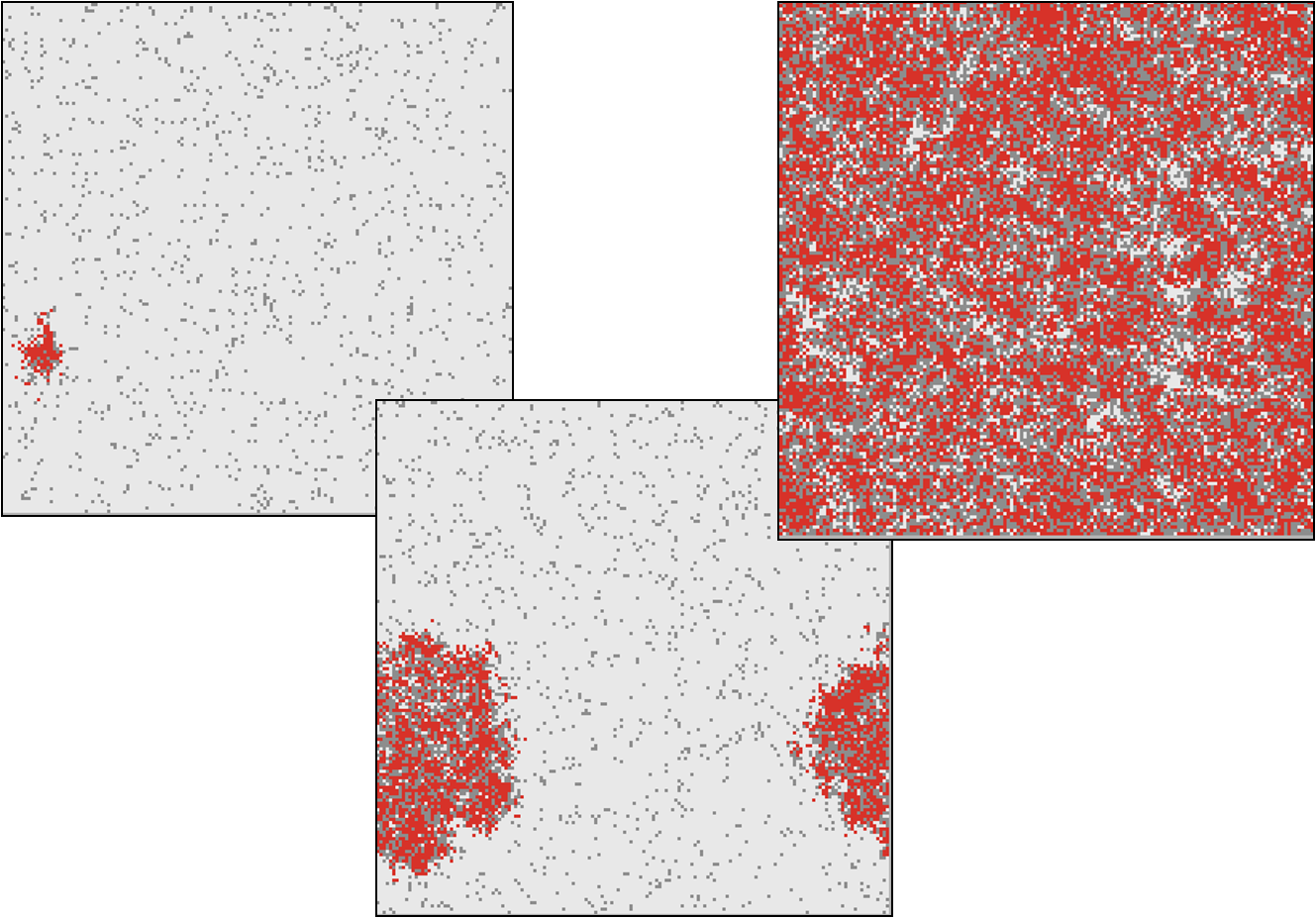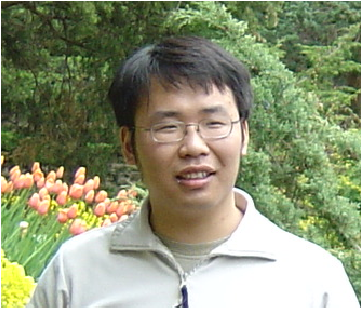

Recent PhD graduate
Now a graduate student at Simon Fraser University
Current undergraduate student
 |
|
 |
| Meng Wu Recent PhD graduate |
Julie Shay Now a graduate student at Simon Fraser University |
Chris Huynh Current undergraduate student |
Our RNA World project is partly funded by an Origin of Life research award from Harry Lonsdale. This project involves collaboration with Dr Niles Lehman at Portland State University and Dr Peter Unrau at Simon Fraser University.
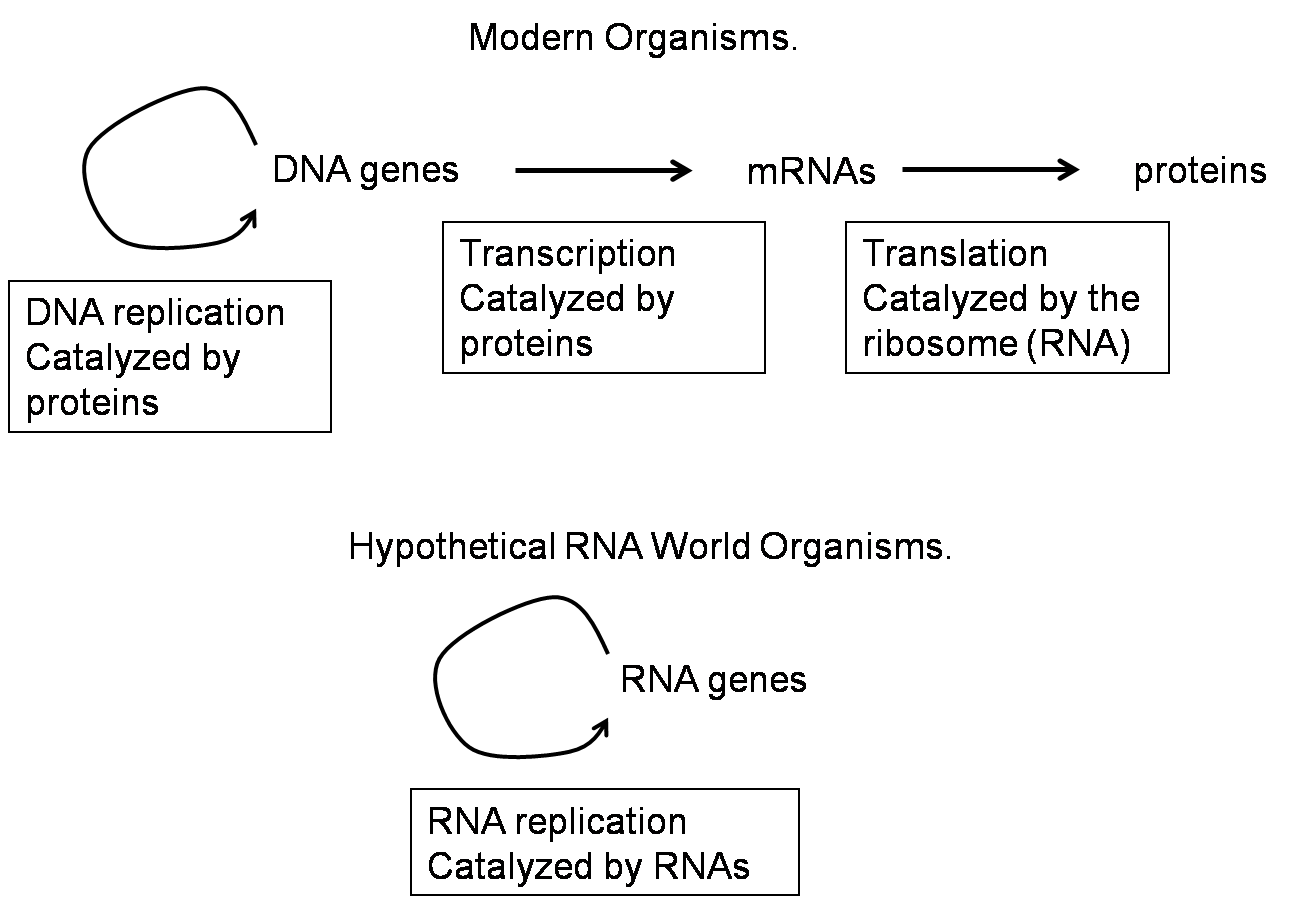
In modern organisms, genetic information is stored in DNA, transcribed to RNA, and translated to proteins. DNA replication and RNA transcription are catalyzed by proteins. Protein translation is catalyzed by the ribosome, which is mostly RNA. Thus the three types of biopolymer in modern organisms are all dependent on one-another.
Maybe life was simpler in the old days... According to the RNA World hypothesis, there was a time when RNA molecules acted as both genes and catalyst. RNA sequences would be replicated by other RNAs. Only later did DNA and proteins evolve.
Ribozymes have also been developed in the lab that exhibit some of the properties that would be necessary in th RNA World
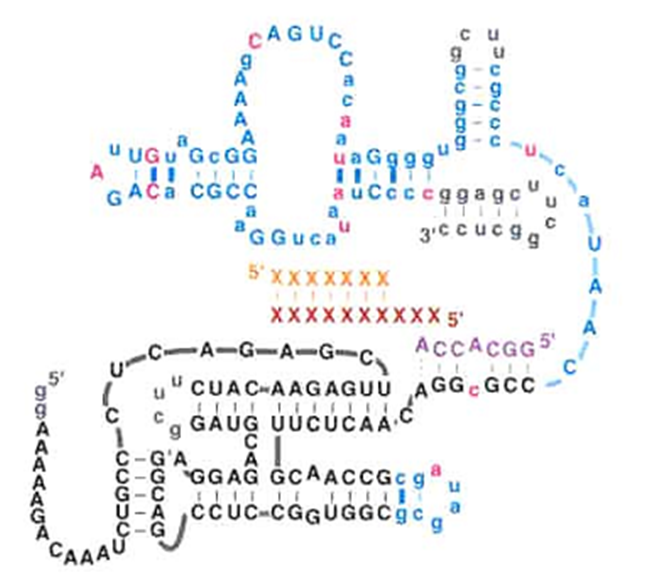 |
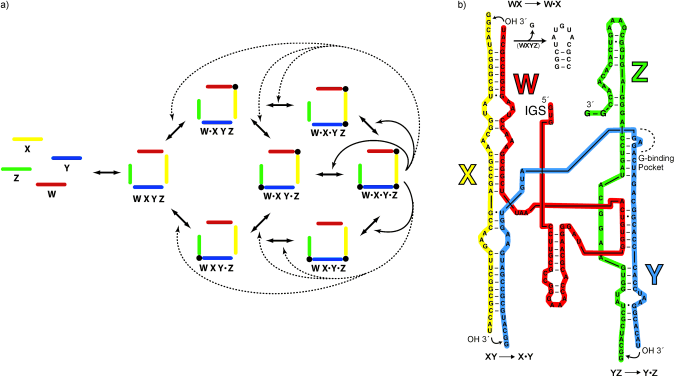 |
| This Polymerase ribozyme synthesizes a new strand of RNA that is complementary to an existing template strand. Johnston et al. (2001) | This Recombinase ribozyme is able to autocatalytically assemble itself from four pieces. Hayden et al. (2008) |
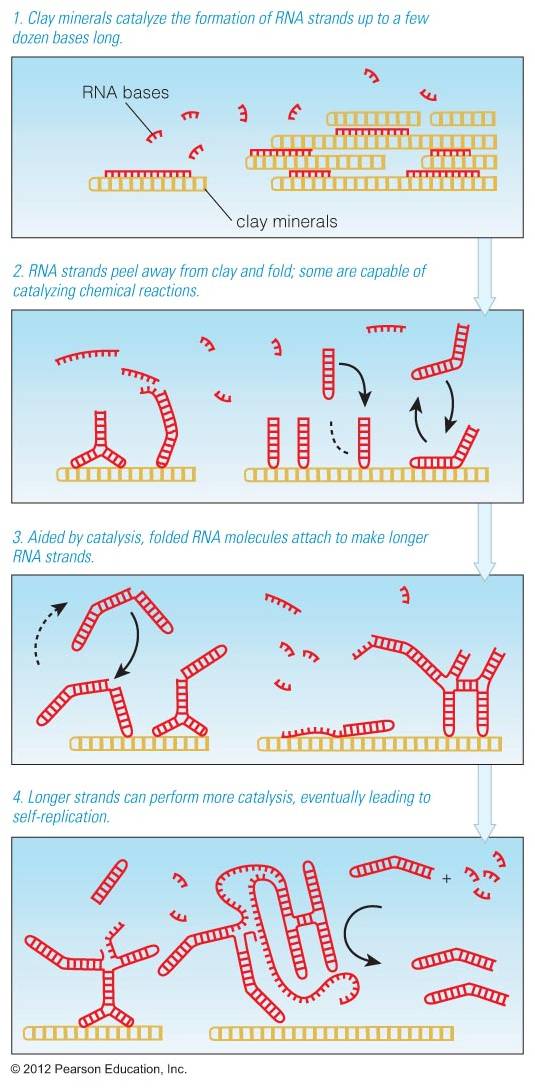

The RNA World theory for the Origin of Life is that self-replicating RNAs (or some other similar biopolymer) emerged from a prebiotic chemical mixture that was able to synthesize RNA monomers and random oligomers. This is shown in the text book picture above (from Life in the Universe).
We are using mathematical and computational models to understand how this came about. Our models assume that RNA polymerization is possible by chemical means before the origin of life, but this is very slow and inefficient. However, if ribozymes are present, they can catalyze RNA polymerization quickly and efficiently, and hence a high concentration of ribozymes can be maintained. There are two stable states of the reaction system for RNA polymerization. A Dead (or non-living) state that is controlled by prebiotic chemistry, and a Living (or autocatalytic) state that is controlled by ribozymes.The Living state can be maintained by ribiozymes that catalyze either monomer synthesis, RNA polymerization, or recombination, as shown in the feedback diagram.
Our work shows that the origin of life is a stochastic phenomenon that begins with just a handful of molecules. In a well-mixed reaction system with large numbers of molecules, the origin of life does not occur because the Dead state remains stable for ever. However, in a spatially distributed system with molecules moving on a surface, the living state can originate by a rare event at one location, and can then spread over the whole surface, as shown in the simulation below.
